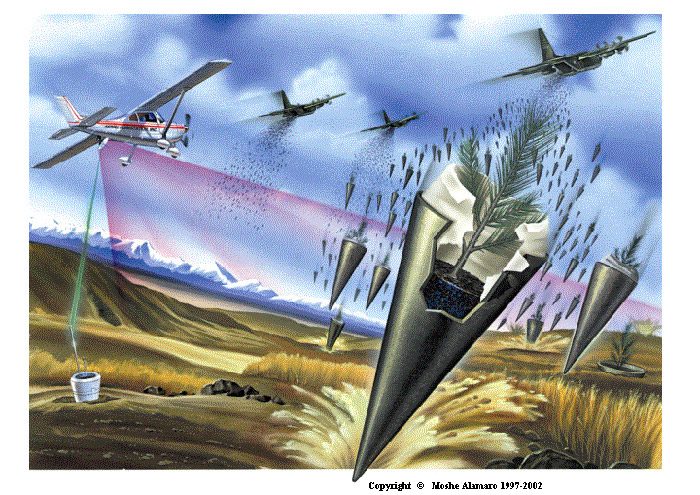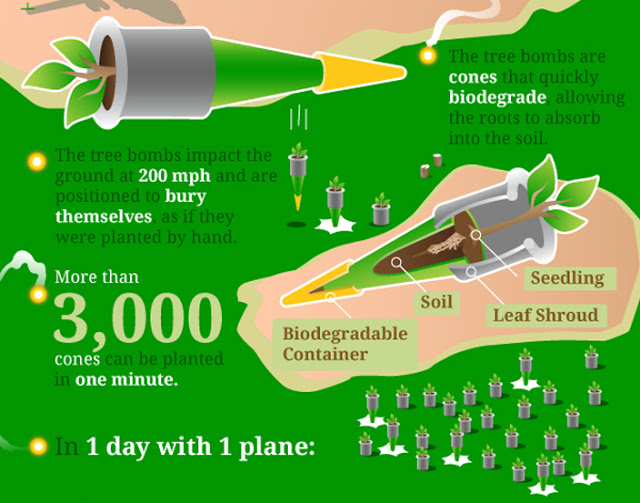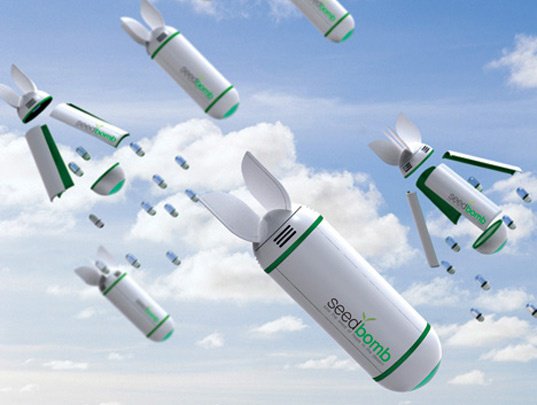Seedling Darts: A Revolutionary Approach to Reforestation

🌿 It ALL Starts With a Seedling! 🌿
The quest for effective reforestation techniques has led to innovative ideas, one of which is the use of seedling darts. This method, which involves dropping seedlings encased in biodegradable darts from aircraft, offers a promising alternative to traditional seed bombing. By ensuring that seedlings are planted with a protective structure, seedling darts aim to improve the survival rate and establishment of young trees in degraded landscapes.

🌿 The Concept of Seedling Darts 🌿
Seedling darts are designed to be dropped from high altitudes, allowing them to penetrate the soil upon impact. The structure of the dart includes a biodegradable casing that acts as a tree guard, protecting the seedling from environmental stressors and herbivores. This approach provides seedlings with a head start in growth, as they are already rooted and ready to establish themselves in the soil.
A notable demonstration of this concept showed that darts could achieve good ground penetration from heights of around 1,000 feet. This capability suggests that seedling darts could be deployed over large areas quickly and efficiently, making them an attractive option for large-scale reforestation projects.
🌿 Advantages Over Traditional Seed Bombing 🌿
Traditional seed bombing involves dropping seeds encased in a mixture of clay and compost from aircraft. While this method can cover large areas, it often results in low germination rates due to various factors, such as seed predation and unsuitable soil conditions. Seedling darts, on the other hand, address these challenges by providing a more controlled environment for the seedlings.
The protective casing of the dart not only shields the seedling but also helps it establish roots more effectively. Additionally, the use of pre-grown seedlings increases the likelihood of successful establishment compared to seeds, which may face numerous obstacles before germination.


🌿 Aerial Seeding and Its Evolution 🌿
Aerial seeding, the practice of sowing seeds from the air, has been used for decades in agriculture and forestry. This technique is particularly useful in areas that are difficult to access by land. According to Wikipedia, aerial seeding has been employed in various contexts, from reforesting after wildfires to restoring grasslands and wetlands.
The evolution of aerial seeding has seen the incorporation of advanced technologies, such as drones and GPS-guided systems, to improve precision and efficiency. Seedling darts represent the next step in this evolution, offering a method that combines the benefits of aerial deployment with the advantages of planting established seedlings.

🌿 Case Studies and Related Projects 🌿
Several projects around the world have explored innovative aerial reforestation techniques. For instance, a project in South Africa, as reported by SA Forestry Online, involved the use of drones to drop seed pods in deforested areas. This method aimed to enhance the precision and effectiveness of seed distribution, similar to the goals of the seedling dart approach.
Another notable project is the use of drones by BioCarbon Engineering, a UK-based company, to plant trees in deforested areas. The drones are equipped with technology to fire seed pods into the ground, ensuring better soil penetration and germination rates. These projects highlight the potential of combining technology with traditional reforestation methods to achieve better outcomes.

🌿 Challenges and Considerations 🌿
While seedling darts offer many advantages, there are challenges to consider. The cost of producing and deploying the darts can be higher than traditional methods, and the success of the approach depends on factors such as soil type, climate, and the species of trees being planted. Additionally, the logistics of coordinating aerial deployments over large areas require careful planning and collaboration with local authorities and landowners.
🌿 Future Prospects 🌿
The potential of seedling darts lies in their ability to rapidly reforest large areas with minimal human intervention on the ground. As technology advances, the efficiency and cost-effectiveness of this method are likely to improve, making it a viable option for addressing deforestation and land degradation on a global scale.
In conclusion, seedling darts represent a promising innovation in the field of reforestation. By providing seedlings with a protective start and leveraging aerial deployment, this method could play a crucial role in restoring ecosystems and achieving ecological balance. As more projects experiment with this approach, the lessons learned will help refine and optimize the technique for widespread use.
🌿 And That’s How We Rewild New Zealand, One Seed at a Time 🌿
Let’s Make It Happen

“And into the forest I go to lose my mind and heal my soul”
